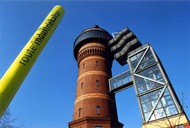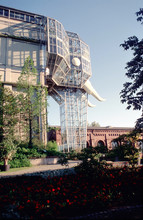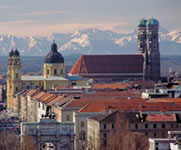
North Rhine-Westphalia, still the heart of Germany's heavy industry, is bordered by the river Ruhr in the south, the river Lippe in the north and the river Rhine in the west. The easternmost boundary of the region is marked by the town of Hamm. The Ruhrgebiet is the largest industrial region in Germany and Europe, with more than 5 million people living in an area of 4,400 square kilometres. The region's economic importance originally stemmed from coal mining and associated industries, primarily the iron and steel industries. Steel barons such as Krupp and Thyssen built their industrial empires here. Today, however, the region's 'heartbeat' has slowed somewhat - the Ruhr region has undergone some structural change, allowing trade and services to develop alongside the traditional industries, and in some places even outstrip them.

An extensive network of roads, railway lines and waterways criss-crosses the region, which consists of a sprawling mass of residential and industrial areas with no clear division between the two. Today, there is a wide range of recreational facilities on offer at the many reservoirs and visitor parks. However, many tourists are still attracted to the region by its places of technical interest, industrial sites that are still in use and museums. The "Route of Industrial Heritage", opened in 1999, is the ideal way to explore this industrial region. Running for a total of 400 km, the circuit takes you to more than 50 striking monuments and fascinating attractions covering 150 years of industrial heritage up to the modern-day transition. Nowhere else can you see so many spectacular sights so close to each other. In this extraordinary location, you'll certainly find a whole variety of things to see and do.







